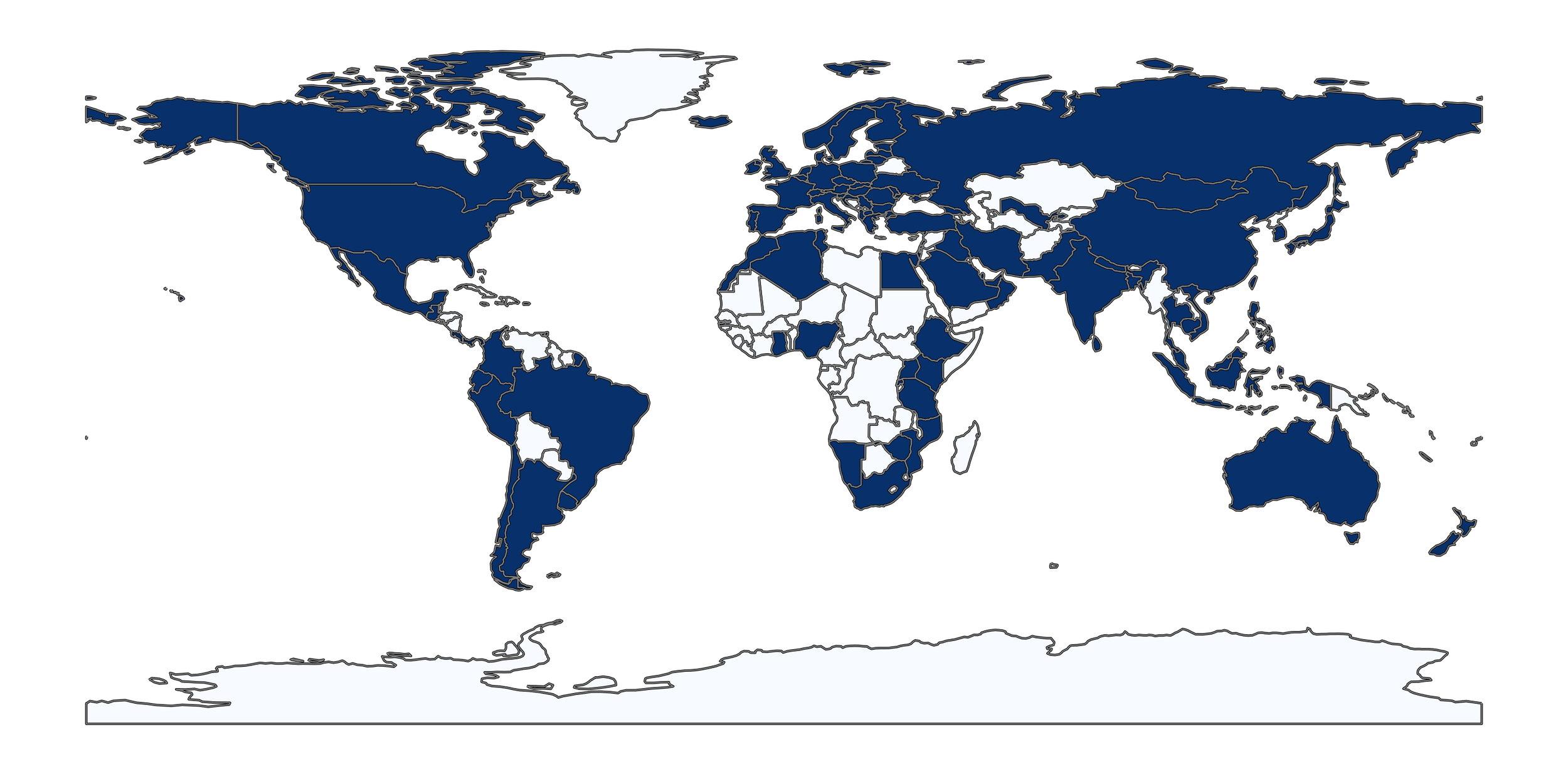20 Simple Food Hacks to Cut Grocery Bills in 2025
Photo by Frames For Your Heart on Unsplash.
Incorporate a few simple behavioral changes into your daily routine and watch your bank account skyrocket…
Reading time: 10 minutes
Disclaimer: I am not a financial adviser, and this content is for informational and educational purposes only. Please consult a qualified financial adviser for personalized advice tailored to your situation.
Smart strategies to save money with food!
TLDR: Focusing on the money-saving tips below will not only help your wallet but will also improve your green credentials.
Cutting newspaper coupons together, organising them alphabetically in his coupon box, and going grocery shopping together are some of my favourite childhood memories with my grandfather. I would then help him find the coupon items at the store - for a kid, this was as much fun as a treasure hunt.
Finding ways to cut waste and save money are always welcome endeavors. Whether you need a few tips to deal with the harmful effects of inflation or simply want to save more money from your paycheck, here are some practical ideas to help you start saving money on food immediately.
In the EU, nearly 59 million tonnes of food waste are generated each year, which is about 131 kg per person. This food waste is worth around 132 billion euros according to Eurostat in 2022. These are annual savings equivalent to €300 per person only on household food waste. Unsurprisingly, several food hacks presented below are geared towards throwing away less food.
What I appreciate most about many of these behavioral changes is that they work well towards creating a lifestyle that is better for the environment. Accounting from production to consumption, food waste contributes around 8-10% of global greenhouse gas emissions. If food waste was a country, it would be the third biggest emitter of greenhouse gases, right after China and the USA (FAO). Tackling food waste at the household level is very important and holds the potential of reducing emissions globally by 450 million metric tons of CO2 per year (Roe et al. 2021).
Now, let's talk about ways to save money…
1. Meal Planning
Meal planning means devoting time each week to plan out your meals for the weak ahead, taking stock of what you already have in your kitchen.
Prepare a detailed list of ingredients needed to prepare a specific number of meals.
To avoid impulse buying and have more time for fun activities, try shopping just once per week.
Assume that there will be some leftovers from your meals. I usually plan to buy enough food for 5-6 lunches and dinners during my weekly shopping.
2. Chose your supermarket wisely
Brace yourself next for a groundbreaking insight: the cost of food can be very different from one supermarket to another. You may be receiving marginally higher quality products in fancier stores, but remember that a large part of the price difference may be explained by staffing a larger number of employees in the premises. Are you willing to patiently queue at the till once a week in order to harvest large money savings?
If you are interested in buying organic products, these are nowadays also available in the cheaper retailers.
Photo by Jacopo Maia on Unsplash.
3. Consider carefully existing sales
It's easy to make unplanned purchases when there are lots of discounted items in the supermarket. Keep calm and stick to your meal plan. Consider whether a given ingredient on sale may work for your meal plan and whether it is actually cheaper after considering the discount.
Of course, if the item on sale is something you regularly buy and doesn't go bad quickly, by all means go ahead and stock up on it.
Use the stores’ apps or payback points wisely. In Germany, Lidl has a shopping app that provides 15-20+ coupons each week together with free items. Some of these coupons match products you have bought before. On the other hand, if you choose to shop at stores like Rewe, you may be tempted by their flashy points program. Unfortunately, in the end, your wallet will still suffer due to higher prices.
Make the most of your shopping trips to keep your mind sharp. Are there 4 kinds of tomatoes offered, each with a different price tag and weight? Take a moment to find out where you will save the most. This will soon become second nature and your savings will add up quickly.
Don't buy the really expensive items you see at the cash register. Practice patience instead!
4. Buy in Bulk
Another groundbreaking insight: for non-perishable items or everyday essentials consider buying larger quantities to get a better price.
5. Don’t show up hungry
Show up hungry at the store at your own peril. This is known to lead to impulse purchases and many stores will increase the scent of baking bread or cupcakes to torture the hungry and increase their sales… stand your guard!
Some markets in certain countries will offer you some free samples to wet your appetite and spur more purchases. Wait until you are done shopping and treat yourself just before going to the cash register. Thanks and check mate!
6. Shopping with children
Some stores will place sugary foods like cereals at the children’s eye level to provoke requests for the product.
Of course, shopping without children is the safest way to avoid impulse buys, but it is also a good educational opportunity to go with them. Teach your kids the treasure hunt pleasure found in the price comparison game!
7. Buy seasonal
Play the laws of supply and demand to your advantage - avoid pricy items out of season.
Avoid the early harvest produce. Wait a couple of weeks before buying the overpriced strawberries.
Check a seasonal calendar (pictured below) to have a good overview of what is in season in your country.
Observing seasonality also applies to imported products. If you enjoy kiwis, get familiar with the time of the year where their price comes down. Contrary to popular belief, the transportation of food or “food miles” really doesn’t play a large role in your carbon footprint. Focusing instead on what you eat will have a much larger effect on protecting our environment.
We use this handy seasonal calendar. It shows when 64 different fruits and veggies are in season.
8. Lean Towards Plant-Based Meals
Eating vegetarian and vegan meals has three main advantages: it is good for our health, helps protect animals, and positively impacts the environment.
In addition, cost savings are delivered by cooking from scratch, rather than opting for plant-based processed foods.
Plant-based proteins, such as beans, tofu, lentils, and chickpeas, are often more affordable than animal proteins.
9. Batch cooking at home
Save time and money by preparing several meals in advance, for instance over the weekends. Prepare and store separate portions that can be conveniently used throughout the week.
Although this requires a bit of discipline, it will save you a lot of time and money. Spend a couple of hours of the weekend to prepare ready-made meals for the busy week ahead. You will protect your wallet by reducing urges to order takeaways.
Be sure to check out budget friendly recipes with affordable staples like beans, rice, lentils, and other pulses.
10. Grow your own herbs
Put your balcony, windowsill, or indoor spaces to good use! Find old pots and containers and start growing your own herbs. This can not only help your shopping bill, it can also be a rewarding and therapeutic experience. Consider growing herbs like basil, parsley, mint, rosemary, and thyme, as they are commonly used in various cuisines and offer numerous health benefits.
Seeds have a higher success rate when planted in well-drained soil and provided with ample sunlight. By growing from seeds, you can enjoy the entire process from start to finish, experiencing the joy of seeing your herbs sprout and flourish.
11. Avoid the bakery
In Germany, you can expect not only long morning queues at the bakery, but also overpriced Brötchen for your early morning troubles. As an alternative, get an extra half an hour of sleep, stay clear of bakeries, and buy freshly baked bread loafs at your weekly supermarket visit. Have these loaves sliced, then freeze them at home and use as needed. Save the ends of the loaves for the food processor to make bread crumbs.
Photo by Prakash Meghani on Unsplash.
12. Food waste inventory - join the monthly challenge!
You can’t manage what you can’t measure. This simple exercise may be painful at first, but trust me, it is worth it! Place a blank sheet of paper on the front of your fridge at the beginning of the month. Each time you throw away a food item note it down along with its estimated price, e.g., one yogurt, 25 cents. Add up all the items at the end of the month and multiply times 12. Voila! Here is your estimated annual food waste bill. The initial shock may be good news as it will stir you permanently into money saving and environmental action.
Don’t feel guilty, just do it and some patterns may emerge. It will help you adjust your shopping and eating habits.
13. Use food waste apps or join food sharing initiatives
Check out what food waste initiatives work in your region. There is likely a food sharing or food saving initiative near you. For example, the “Too good to go” app works very nicely in Germany. You can show up at different supermarkets, cafes, and shops and buy their leftover items at a low price. Once again, enjoy the double win of saving and making a positive impact on our environment.
14. Eating out
This is usually one of the key culprits undermining our budget. If you are an unapologetic foodie and eating out is your passion, by all means continue with your outings and search for savings elsewhere. But, if you only eat out because you don't want to cook, maybe it's a good idea to reconsider this costly habit.
Either way, decide how many times a week you want to eat out and stick to it. Go out to celebrate special occasions only or choose to limit yourself to eating out once per week or once per month.
Dine out too often and you may fall into the traps of hedonic adaptation; you might start taking the experience for granted or find yourself comparing the quality of today’s food to yesterday’s instead of just enjoying the experience.
15. Invite people over for dinner
Are you on board with cutting back on the restaurant bills, but worry about the social outcome of this decision? There are certainly ways around this - why not reach out to your friends and organize a potluck?
16. Small energy saving hacks in the kitchen
Do not use the stove to heat up water, use an electric kettle instead. Use the pot to determine how much water you really need to boil. When the water is ready, put it back in the pot and start cooking.
When you cover the pots and pans while cooking, you can lower the heat on the stove and use less electricity or gas. In addition, try turning off the stove a few minutes before time to take full advantage of the hot pot or pan.
This requires more of an investment, but if possible induction hobs use less energy than electric or gas to heat up the same amount of food.
Double check if your freezer and fridge are set at a reasonable temperature.
Examine your fridge on a regular basis. Have you identified any odd bottle or jam jar sitting towards the back untouched for the past six months? It takes a lot of energy to keep them cool - go ahead and eat it!
Use the toaster instead of the oven when you can. For example, don’t defrost your bread in the oven.
Photo by nrd on Unsplash.
17. Organize your fridge
Group similar items together in designated areas, e.g., one for dairy products and another for fruits and vegetables. Use storage containers to maximize space and create a tidy environment.
Arrange items based on accessibility and frequency of use, placing frequently used products at eye level.
Set aside a specific place for items that need to be eaten. This is the lowest level for me; I’ll try to incorporate these items in my meals over the next couple of days.
18. Smart use of freezer.
Use the freezer for prepared meals and for leftovers.
Freeze some items directly after shopping to reduce the chance of going to waste. I do this with broccoli (which I chop first) and bread.
Some food containers such as cans sometimes hold very large volumes, e.g., beans or chickpeas. When I open the can to use them I’ll typically rinse, freeze, and store the rest for convenient use later on.
Are your bananas ripening too quickly? If you can eat them over the next couple of days place them in the fridge. If not, cut and freeze them for a tasty banana ice cream in a few days time. For this, try out different ice cream consistencies by combining frozen banana and soy milk. It is surprisingly tasty for such a simple recipe and the kids love it.
19. Learn how to store fresh food to prolong their freshness.
Leafy greens, like lettuce and spinach, store well in airtight bags or containers after removing any excess moisture.
Root vegetables, such as potatoes and carrots, should be kept in a cool and dark place.
Soft fruits, like berries, should be refrigerated in their original containers or in breathable containers lined with paper towels to absorb excess moisture.
Apples, oranges, and pears can be kept at room temperature but away from direct sunlight.
Research how to ripen fruit and vegetables. For instance, we ripen avocados and mangos by covering them with bananas. Keep in mind that sometimes you can get a better price at the store for unripe produce.
Regularly check and remove any spoiled fruits and vegetables from storage to prevent them from contaminating the rest.
20. Regularly take stock of your pantry.
Despite our best planning efforts, we often forget about the odd pulses package or sauce jar we bought a few weeks ago. Review every now and then and try to make a meal out of these products before they go off!
Those are all the tips we have for now! Did we miss any creative moneys-saving hacks? Please let us know and we will update this post so everyone can benefit.
As a final takeaway, please take these 20 tips with a grain of salt. The idea is not that you incorporate all of them against your will, but that the post helps the reader identify a few low-effort behavioral changes that may help to save meaningful amounts of money.
Check out other recent articles
What personal finance books should I read?
Improve your financial literacy around investing. Some good books to start out with:
“The Little Book of Common Sense Investing: The Only Way to Guarantee Your Fair Share of Stock Market Returns” (affiliate link), by John C. Bogle
“A Random Walk Down Wall Street: The Best Investment Guide That Money Can Buy” (affiliate link), by Burton G. Malkiel
“The Simple Path to Wealth: Your road map to financial independence and a rich, free life” (affiliate link), by JL Collins.
Book to pursue financial independence: “Your Money or Your Life: 9 Steps to Transforming Your Relationship with Money and Achieving Financial Independence” (affiliate link), by Vicky Robin and Joe Dominguez
Join readers from more than 100 countries, subscribe below!

Didn't Find What You Were After? Try Searching Here For Other Topics Or Articles:



































